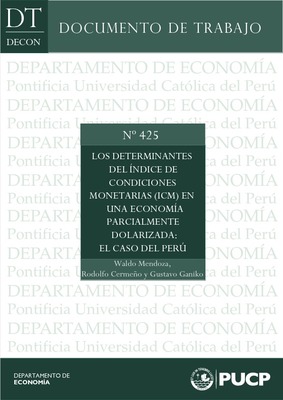| dc.description.abstract | El Índice de Condiciones Monetarias (ICM), un promedio ponderado de las variaciones de la tasa de interés y el tipo de cambio real, puede utilizarse para evaluar la posición de la política monetaria en el contexto de una economía pequeña y abierta. Sin embargo, en el caso de Perú, la dolarización parcial de la economía obliga a hacer algunos ajustes al ICM tradicional, que supone que tanto un alza en la tasa de interés como una apreciación del tipo de cambio real son necesariamente recesivos. Primero, una devaluación del tipo de cambio real puede ser recesivo, porque el efecto hoja de balance puede primar sobre el efecto competitividad. En segundo lugar, los movimientos en la tasa de interés en moneda extranjera, impulsadas por los cambios en la tasa de encaje por depósitos en esta moneda, pueden determinar también la posición de la política monetaria. En esta investigación se formula un ICM acorde con las características anteriores y se procede a calcularlo utilizando los resultados de estimación de un modelo semi-estructural de pequeña escala.
The Monetary Conditions Index (MCI) –a weighted average of changes in the interest rate and real exchange rate– can be useful to characterize the stance of the monetary policy in the context of a small open economy. However, in the particular case of Peru, the partial dollarization of the economy calls for some adjustments to the traditional MCI, since it relies on the assumption that an increases in the interest rate or an appreciation of the real exchange rate are necessarily contractionary. First, a devaluation of the real exchange rate can be recessive, because the balance sheet effect may outweigh the competitiveness effect. Second, movements in interest rates in foreign currencies, driven by changes in the reserve requirement in that currency, may also determine the direction of the monetary policy. In this paper we formulate a MCI in accordance with the aforementioned characteristics and compute it using estimation results from a small-scale semi-structural model. | en_US |


